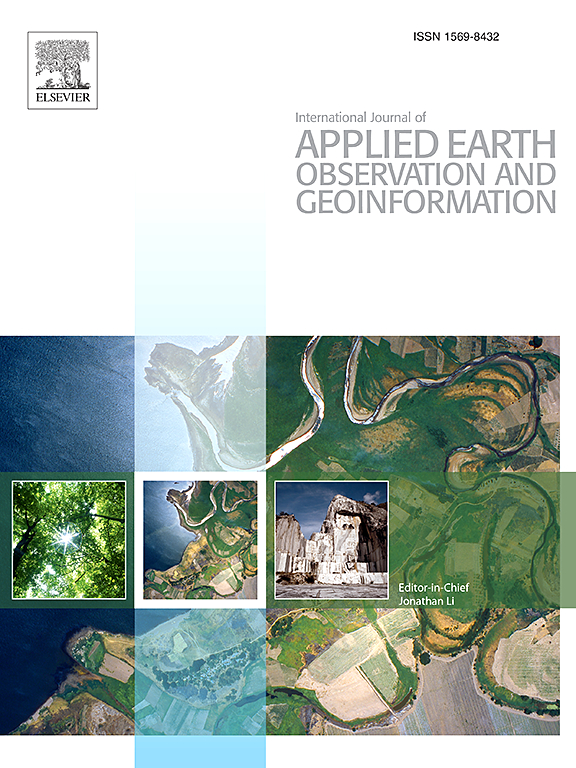Learning dual context aware POI representations for geographic mapping
IF 7.6
Q1 REMOTE SENSING
International journal of applied earth observation and geoinformation : ITC journal
Pub Date : 2025-06-20
DOI:10.1016/j.jag.2025.104683
引用次数: 0
Abstract
Driven by artificial intelligence technologies, geospatial representation learning has become a new trend to better understand urban systems. Points of Interest (POI), as the current mainstream data in urban studies, plays an important role in these methods to discover urban characteristics. Existing studies on POI representation learning focus on spatial and type information, but overlook heterogeneous semantic interaction between POIs as well as hierarchical associations among types. To tackle these two problems, we propose a novel approach, called POI Dual Context Aware Neural Network (DCA) for learning POI representations by jointly embedding both spatial context and type context. For the spatial context of POIs, we introduce a distance decay effect constrained graph attention network as an encoder of DCA, which takes the heterogeneous semantic interaction and spatial proximity of POIs into account. For the type context of POIs, we propose a type hierarchical aggregation neural network architecture for DCA, and design a type infomax optimization objective following contrastive learning mechanism. The superiority of DCA is demonstrated in three geographic mapping tasks, including urban function mapping, region popularity mapping, and housing price mapping. This study provides a new insight to mine deep information from POIs, contributing to a better understanding of urban systems. The source code is released at http://github.com/quan-qin/DCA.
学习地理映射的双重上下文感知POI表示
在人工智能技术的推动下,地理空间表征学习已成为更好地理解城市系统的新趋势。兴趣点(point of Interest, POI)作为当前城市研究的主流数据,在这些发现城市特征的方法中发挥着重要作用。现有的POI表征学习研究主要关注空间信息和类型信息,但忽视了POI之间的异构语义交互以及类型之间的层次关联。为了解决这两个问题,我们提出了一种新的方法,称为POI双上下文感知神经网络(DCA),通过联合嵌入空间上下文和类型上下文来学习POI表示。针对poi的空间上下文,我们引入了距离衰减效应约束图注意网络作为DCA的编码器,该网络考虑了poi的异构语义交互和空间接近性。针对poi的类型背景,提出了一种类型层次聚合神经网络结构,并设计了一个基于对比学习机制的类型信息最大化优化目标。DCA的优势体现在城市功能制图、区域人气制图和房价制图三个地理制图任务上。本研究为从poi中挖掘深层信息提供了新的视角,有助于更好地理解城市系统。源代码发布在http://github.com/quan-qin/DCA。
本文章由计算机程序翻译,如有差异,请以英文原文为准。
求助全文
约1分钟内获得全文
求助全文
来源期刊

International journal of applied earth observation and geoinformation : ITC journal
Global and Planetary Change, Management, Monitoring, Policy and Law, Earth-Surface Processes, Computers in Earth Sciences
CiteScore
12.00
自引率
0.00%
发文量
0
审稿时长
77 days
期刊介绍:
The International Journal of Applied Earth Observation and Geoinformation publishes original papers that utilize earth observation data for natural resource and environmental inventory and management. These data primarily originate from remote sensing platforms, including satellites and aircraft, supplemented by surface and subsurface measurements. Addressing natural resources such as forests, agricultural land, soils, and water, as well as environmental concerns like biodiversity, land degradation, and hazards, the journal explores conceptual and data-driven approaches. It covers geoinformation themes like capturing, databasing, visualization, interpretation, data quality, and spatial uncertainty.
 求助内容:
求助内容: 应助结果提醒方式:
应助结果提醒方式:


